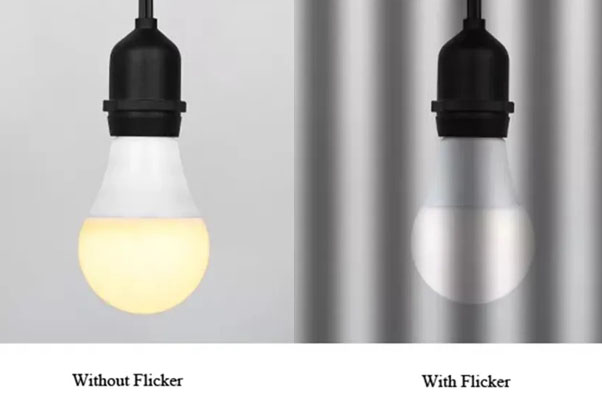LED lighting technology has quickly gained popularity due to its energy efficiency, long lifespan, and high brightness. However, in practical applications, many people encounter the issue of LED flicker. This flicker not only affects visual comfort but can also negatively impact health. This article will delve into how LED drivers achieve flicker-free performance, providing a comprehensive understanding of Flicker-free LED-Treiber.
What is LED Flicker?
LED flicker refers to the periodic fluctuation in the brightness of LED lights during operation. Flicker can be visible or invisible, but both types can cause visual fatigue, headaches, and other health issues. LED flicker is mainly categorized into two types:
- Visible Flicker: Flicker at frequencies below 100Hz that can be perceived by the human eye.
- Invisible Flicker: Flicker at frequencies above 100Hz that cannot be directly perceived by the human eye but can still affect the visual system.
Causes of Flicker
The primary causes of LED flicker include:
- Voltage Fluctuations: Variations in the AC power supply directly affect the LED’s brightness.
- Quality of the Driver: Poor quality driver designs and components lead to unstable current.
- Dimming Technologies: Some dimming technologies, like low-frequency PWM dimming, are prone to causing flicker.
How to Achieve Flicker-Free LED-Treiber
Achieving flicker-free LED drivers requires optimization and design across multiple technical dimensions. Here are the main methods:
1. High-Frequency Modulation Technology
High-Frequency PWM Dimming: High-frequency PWM (Pulse Width Modulation) dimming controls LED brightness by adjusting the switching frequency of the current. Traditional PWM dimming can cause flicker at low frequencies, but high-frequency PWM dimming (typically above 20kHz) increases the frequency to a range undetectable by the human eye, thus achieving flicker-free performance.
2. High-Quality Constant Current Design
Constant Current Drivers: High-quality constant current drivers provide stable current output, ensuring continuous LED brightness. This design effectively suppresses current fluctuations, avoiding brightness instability.
3. Use of Filtering Circuits
Filtering Technology: Filtering circuits in the driver smooth the current output, eliminating low-frequency fluctuations from the power supply. Common filtering components include capacitors and inductors, which remove noise and interference from the AC power supply, enhancing the stability of the driver.
4. High Power Factor Correction (PFC)
PFC Technology: Power factor correction circuits optimize the input current waveform, making it more sinusoidal and reducing harmonic distortion. A high power factor improves power efficiency and reduces current fluctuations, thereby minimizing flicker.
5. Linear Dimming Technology
Linear Dimming: Linear dimming adjusts the LED current directly to control brightness rather than using PWM dimming. This method provides smooth dimming, especially at low brightness levels, avoiding low-frequency flicker.
6. Selection of High-Quality Components
Premium Components: Using high-quality components (such as low-noise inductors and high-frequency capacitors) enhances the overall performance of the driver. Premium components reduce current and voltage fluctuations, improving the stability and reliability of the power supply.
7. Comprehensive Design Considerations
System Design Optimization: Designing a driver involves considering input voltage range, output current characteristics, and dimming requirements comprehensively. Through simulation and practical testing, designers ensure the driver can provide stable, flicker-free output under various operating conditions.
How to Distinguish Between Flicker-Free and Flickering LED Drivers
In practice, users can distinguish between flicker-free and flickering LED drivers by:
- Visual Observation: Directly observe if the light flickers during operation.
- Using Detection Equipment: Use professional flicker meters or oscilloscopes to detect flicker frequency and fluctuation.
- Checking Product Specifications: High-quality drivers often explicitly state flicker-free characteristics in their product specifications.
Applications of Flicker-Free LED-Treiber
Flicker-free LED drivers are widely used in environments requiring high visual comfort and safety, including:
- Residential Lighting: Provides a comfortable lighting environment, preventing eye strain.
- Commercial Lighting: Used in offices, malls, hotels, etc., to enhance overall lighting quality and user experience.
- Medical Lighting: Used in hospitals and clinics, providing stable lighting and reducing visual fatigue for patients and medical staff.
- Educational Lighting: Used in schools and classrooms, providing a healthy learning environment for students.
